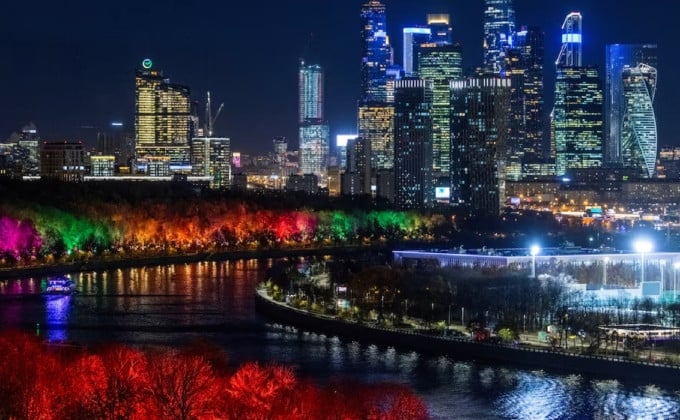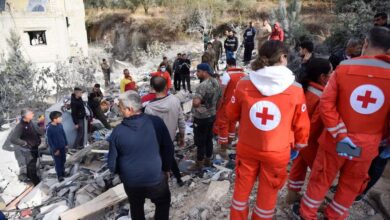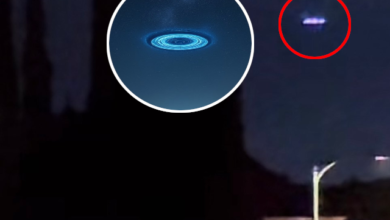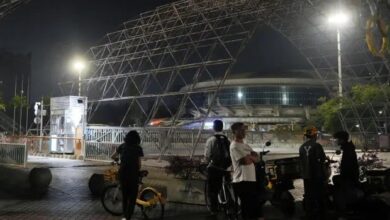Ukraine launched a massive drone strike on Moscow on Sunday, sending at least 34 drones toward the Russian capital in the largest such attack since the start of the war in 2022.
The strike forced the diversion of flights from three major Moscow airports and resulted in at least one reported injury.
Russian air defenses were able to shoot down a significant number of the drones, with the Russian Defense Ministry stating that it had intercepted 36 other drones across western Russia during the same period.
The attack on Moscow comes as tensions continue to escalate in the conflict, now in its third year.
The Ukrainian assault primarily targeted Moscow’s infrastructure, although specific details of the damage remain unclear. Russia’s federal air transport agency confirmed that major Moscow airports—Domodedovo, Sheremetyevo, and Zhukovsky—diverted flights as a precautionary measure before returning to normal operations.
While the drone strike caused some disruptions, Moscow itself showed little sign of panic, with daily activities continuing on the city’s boulevards.
The attack is part of Ukraine’s ongoing efforts to strike back at Russian assets, despite being vastly outgunned.
While Moscow has built a sophisticated air defense system, dubbed the “Moscow Umbrella,” to protect key buildings and government institutions, the city has faced increasing drone strikes, a tactic both sides have increasingly relied upon throughout the war.
Ukraine has repeatedly used drone attacks to target strategic military sites, including airfields, refineries, and radar stations. In the past few months, drones have also been used to strike Russian-controlled territories within Ukraine, as well as inside Russia itself.
Ukrainian officials say these attacks aim to disrupt Russia’s military supply chains and retaliate against ongoing Russian assaults on Ukrainian cities.
Meanwhile, Russia is also ramping up its drone capabilities, deploying a mix of homemade and advanced models. The use of drones in this conflict has evolved rapidly, with both sides seeking innovative ways to deploy and defend against them.
Ukrainian President Volodymyr Zelensky has called for continued investment in drones, which he considers a crucial part of Ukraine’s defense strategy.
In response to the latest attack, Russian President Vladimir Putin labeled Ukraine’s drone strikes as “terrorism” and vowed retaliation, though he has yet to provide specifics.
Moscow’s response includes advanced anti-drone systems, as well as electronic jamming technologies designed to disrupt Ukrainian drone operations.
However, the continued success of Ukrainian drone strikes underscores the limitations of Russia’s defenses.
The conflict, which began with Russia’s invasion of Ukraine in February 2022, has now shifted into a prolonged, grinding war of attrition, with both sides suffering heavy casualties.
While fighting on the frontlines remains intense, the war has also seen new forms of combat, with drones becoming an essential weapon for both sides.
This ongoing escalation of drone warfare is reshaping the nature of the conflict and further complicating efforts for peace.
On the international stage, Ukraine continues to receive support from Western allies, including arms supplies and intelligence sharing.
As for Russia, it has found support from countries like North Korea and Iran, though it remains diplomatically isolated in many parts of the world.
The continued drone attacks on Moscow and other Russian targets signal that Ukraine is committed to escalating the war in its effort to reclaim occupied territory and resist Russian occupation.
The war’s impact is felt not only on the battlefield but also in the civilian sphere, as Ukraine grapples with the threat of constant airstrikes, particularly in the east and south, where Russian forces have concentrated much of their military activity.
As the conflict enters its third year, the use of drones may increasingly define the future of warfare in Ukraine, adding a new layer of complexity to the already deadly conflict.







